In our comparison we will tell you what has changed in iPad Pro 2021 vs iPad Pro 2020. Apple’s ‘Sprint Event’, the first product presentation in 2021, brought a good amount of devices, from the revision of the Apple TV 4K to the new AirTags. And there was the long-awaited refresh of the iPad Pro with a resounding leap in power and display technology for the top model, the 12.9-inch iPad Pro 2021.
Apple’s range of tablets gains two new models with a renewal that not only focuses on improving on the last generation in terms of power, it also represents a new step in the strategy of unifying the experience of large-screen devices. But what has changed in the iPad Pro of 2021 compared to the iPad Pro of 2020? Let’s look at it in detail.
Specs – iPad Pro 2020 vs iPad Pro 2021
| 11-INCH IPAD PRO 2020 | 12.9-INCH IPAD PRO 2020 | 11-INCH IPAD PRO 2021 | 12.9-INCH IPAD PRO 2021 | |
|---|---|---|---|---|
| SCREEN | 11-inch Liquid Retina 2,388 x 1,668 pixels ProMotion (up to 120Hz refresh rate) 600 nits of brightness True Tone DCI-P3 100% compatibility |
12.9-inch Liquid Retina 2,732 x 2,048 pixels ProMotion (up to 120Hz refresh rate) 600 nits of brightness True Tone DCI-P3 100% compatibility |
11-inch Liquid Retina 2,388 x 1,668 pixels ProMotion (up to 120Hz refresh rate) 600 nits of brightness True Tone DCI-P3 100% compatibility |
12.9-inch Liquid Retina XDR 2,732 x 2,048 pixels (miniLED) ProMotion (up to 120Hz refresh rate) 600 nits of brightness 1,000 nits maximum full-screen brightness and 1,600 nits peak brightness (HDR) True Tone DCI compatibility -P3 100% |
| PROCESSOR | Apple A12Z Bionic | Apple A12Z Bionic | Apple M1 | Apple M1 |
| RAM | 6GB (not specified by Apple) | 6GB (not specified by Apple) | 8GB with 128, 256, and 512GB models 16GB with 1TB and 2TB models |
8GB with 128, 256, and 512GB models 16GB with 1TB and 2TB models |
| STORAGE | 128GB 256GB 512GB 1TB |
128GB 256GB 512GB 1TB |
128GB 256GB 512GB 1TB 2TB |
128GB 256GB 512GB 1TB 2TB |
| REAR CAMERAS | 10MP ultra-wide-angle 12MP wide-angle LiDAR scanner 4K TrueDepth video |
10MP ultra-wide-angle 12MP wide-angle LiDAR scanner 4K TrueDepth video |
10MP ultra-wide-angle 12MP wide-angle LiDAR scanner 4K TrueDepth video |
10MP ultra-wide-angle 12MP wide-angle LiDAR scanner 4K TrueDepth video |
| SOFTWARE (AT LAUNCH) | iPadOS 13.4 | iPadOS 13.4 | iPadOS 14.5 | iPadOS 14.5 |
| CONNECTIVITY | 4G + WiFi model WiFi model |
4G + WiFi model WiFi model |
5G + WiFi model WiFi model |
5G + WiFi model WiFi model |
| OTHERS | Magic Keyboard compatible Apple Pencil compatible Four speakers Five Apple Pay microphones |
Magic Keyboard compatible Apple Pencil compatible Four speakers Five Apple Pay microphones |
Magic Keyboard compatible Apple Pencil compatible Four speakers Five Apple Pay microphones |
Magic Keyboard compatible Apple Pencil compatible Four speakers Five Apple Pay microphones |
| DIMENSIONS AND WEIGHT | 247.6 x 178.5 x 5.9mm 471g WiFi, 473g Cellular |
280.6 x 214.9 x 5.9mm 641g WiFi, 643g Cellular |
247.6 x 178.5 x 5.9mm 466g WiFi, 468g Cellular |
280.6 x 214.9 x 6.4mm 682g WiFi, 684g Cellular |
Processing power
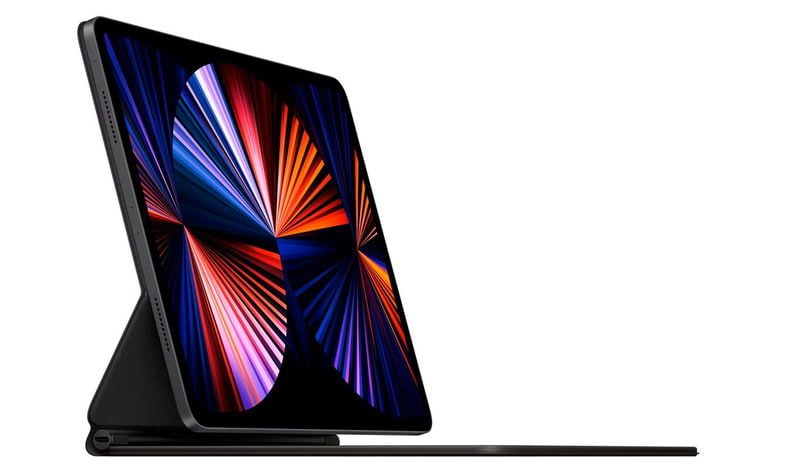
The iPad Pro does not bear that name for anything, since Apple gives them the highest performance. Within the ‘premium’ segment to which they belong, power has always been a hallmark. This year it makes even more sense.
The iPad Pro of 2020 was already more than powerful thanks to the Apple A12Z Bionic SoC: capable of rendering video in super high resolution and without being intimidated by any app or game. So, to justify the renewal after only one year since the previous models (two years passed between the iPad Pro 2020 and its previous generation), Apple decided to include the new computer processor, the Apple M1. This is a big leap forward in performance.
iPadOS is still a tablet operating system that makes it somewhat difficult to get the most out of an SoC like the Apple M1. It would not be surprising if Apple were to consider bringing the desktop and tablet operating systems closer together, which would allow high-performance software to run on the iPad Pro in 2021.
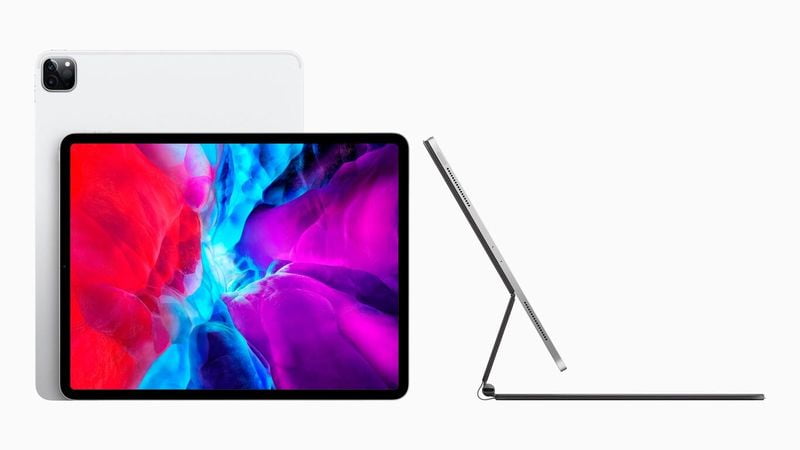
In the rest of the features, there are no exaggerated differences between the 2020 and 2021 models. Apple includes one more storage version in the new models (2TB), for the first time specifies the amount of RAM (iPad Pro 2021 have 8GB of RAM in the 128, 256 and 512GB storage versions; 16GB in 1 and 2TB) and adds 5G connectivity to the models with connection to mobile networks. The 2020 iPad Pro’s maintain 4G (more than enough at present).
Design, materials, and multimedia experience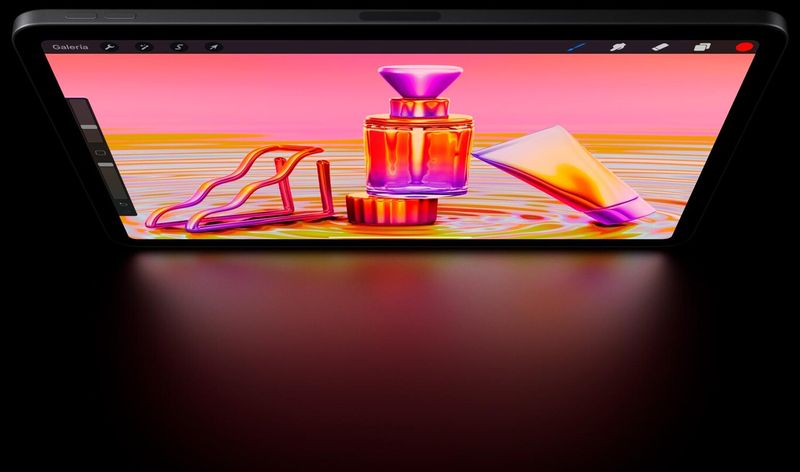
It is very difficult to differentiate at a glance between the 2020 and 2021 models as the design remains almost unchanged. Aluminum body, thin bezels around the screen, Face ID for both, dual rear camera with LiDAR scanner inside a square module, 0.5 mm thicker for the iPad Pro 2021 12.9-inch… No doubt, what sets them apart is the interior. With one but.
Apple has decided to introduce the minILED panel display in the 2021 iPad Pro line, although only in the top model, the 12.9-inch. Also, it improves color and contrast reproduction with the Liquid Retina XDR technology of that iPad Pro; while the rest remains Liquid Retina ‘plain’.
On paper, the new 12.9-inch iPad Pro 2021 display marks a big evolutionary step forward compared to the other three models, especially in terms of brightness, pure blacks, and contrast. Mind you, this improvement in the display of content represents a difference of $100 compared to the iPad Pro 2020 12.9-inch. In the other model, Apple has decided to keep the same cost as last year.
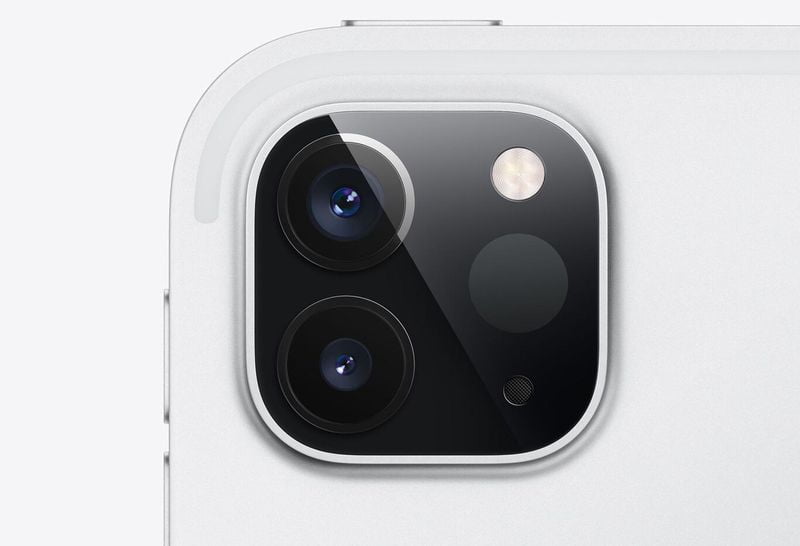
The rear cameras do not undergo too many changes, unlike the front: Apple has decided to improve the multimedia capture features, both for photography and video, as well as to improve video conferencing. From the 7MP offered by the iPad Pro of 2020 we move to 12MP; with TruDepth technology in all four models and the relevant Face ID unlocking.
An evolutionary leap with an eye on the future
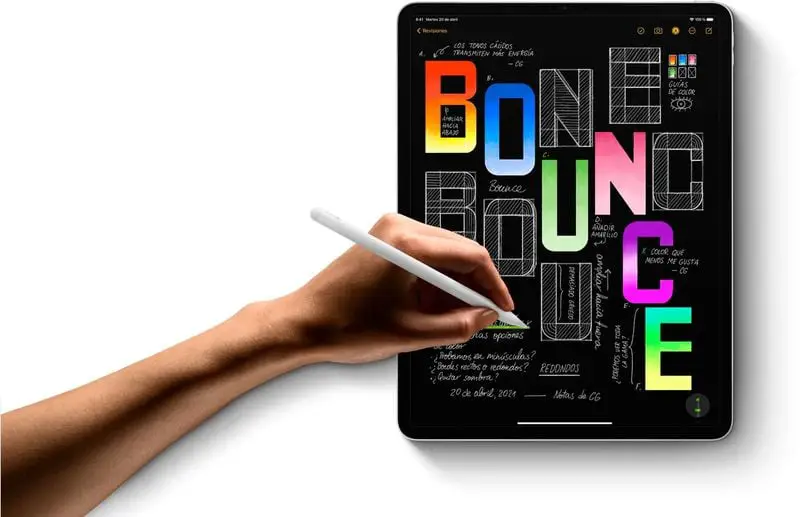
Put one against the other, one only has to look at the numbers to not justify the leap: the iPad Pro of 2020 was already more than capable for any task that was demanded of them. The leap to the Apple M1 SoC implies a guarantee of performance for several years to come, it is also the gateway to the approach of desktop software to tablet software.
iPadOS is a versatile, powerful, and constantly evolving operating system, a system that surely can’t take advantage of all the power that the Apple M1 provides. This may change with iPadOS 15 and iOS 15, also if Apple enables the bridge between desktop and tablet apps. Why not have an untrimmed Adobe Premiere, or a desktop Photoshop now that Adobe has its version for M1?
The iPad Pro 2021 is a bet on the future. The leap in hardware over the 2020 iPad Pro is notable, but not abysmal. We will see if Apple manages to match the iPad to the MacBook Air, in price it is already close (even exceeds it, there are more expensive versions of iPad Pro 2021).





